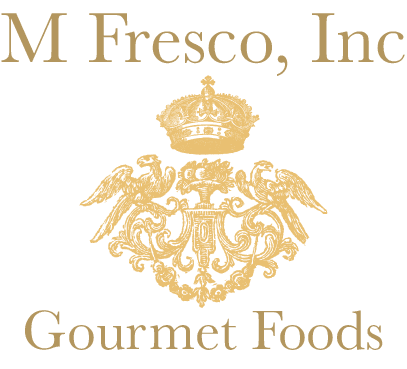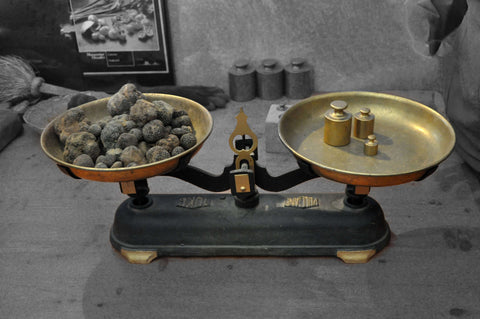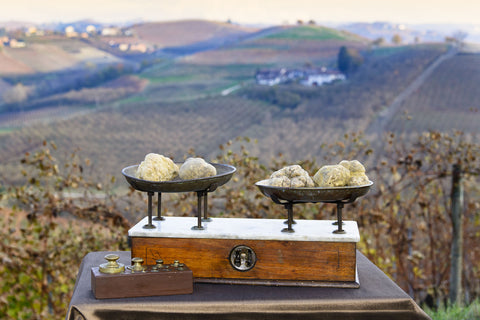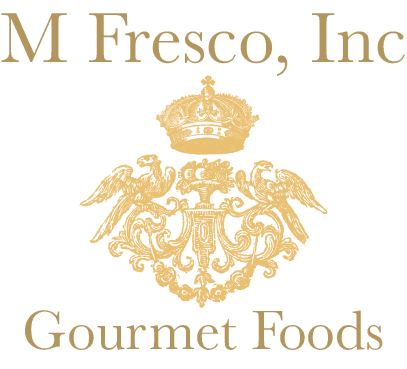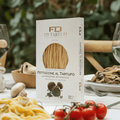Truffle History
Antiquity:
The history of truffles is as fascinating as it is ancient, dating back millions of years before the dawn of human civilization. While the earliest mentions of truffles appear in the writings of ancient civilizations like the Neo-Sumerians and Theophrastus in the fourth century BC, scientific studies reveal that truffles have been on Earth for much longer—likely between 360 and 280 million years ago.
During the Paleozoic period, truffles began to spread across the world, aided by beetles that helped disperse their spores. Fossils of truffles, such as the Tuber Spinoreticolatum, have been discovered in various locations, including Northern America and the Piedmont region of Italy, where a particularly remarkable fossil remained dormant for an astounding 300 million years.
In classical times, the origins of truffles remained a mystery that captivated the minds of many. Despite their elusive nature, truffles were prized for their unique aroma and flavor, leading civilizations like the Babylonians to search for them along beaches and in the sands of the desert as early as 3000 BC.
Today, truffles continue to captivate and inspire, their rich history and culinary allure serving as a testament to their enduring appeal across millennia. As we continue to uncover the secrets of these ancient treasures, one thing remains certain: the legacy of truffles will continue to enrich our culinary experiences for generations to come.
The mythology and folklore surrounding truffles are as rich and varied as their flavors. Throughout history, these prized delicacies have been associated with legends, myths, and even aphrodisiac powers, captivating the imaginations of poets, philosophers, and culinary enthusiasts alike.
In ancient Greece, truffles were revered as a symbol of love and desire, believed to be favored by Aphrodite, the goddess of love. The poet Philoxenus of Lefkas was among the first to speak of their reputed aphrodisiac powers, adding to their allure and mystique.
Various theories emerged to explain the origin of truffles. Plutarch believed that they were the result of a combination of lightning, warmth, and water in the soil, while Juvenal attributed their creation to thunder and rain. Cicero likened truffles to "children of the earth," while Dioscorides considered them to be tuberous roots with unique properties.
One popular legend suggests that truffles are born at the point where thunderbolts thrown by Zeus meet the earth, adding a mythical element to their origins.
During the Classical Period in Italy, two main types of truffles were produced: the Tuber Melanosporum, also known as the black truffle, and the Tuber Magnatum, known as the white truffle. These prized varieties were highly sought after for their distinct flavors and aromas, cementing Italy's reputation as a truffle-producing region of unparalleled excellence.
From ancient myths to modern-day delicacies, the legacy of truffles continues to endure, inspiring wonder and fascination with each aromatic bite. As we savor their exquisite flavors, we are reminded of the timeless allure of these earthy treasures and the rich tapestry of stories that surround them.
Middle Age:
The Middle Ages marked a period of appreciation and culinary exploration of truffles, where peasants and nobility alike utilized these prized fungi to enhance a variety of dishes. Among the noble families who held a particular fondness for truffles were the Savoia family, who esteemed truffles for their unique flavor and aroma. It became a well-established tradition for Acaja princes to present truffles as gifts to the Bourbons, highlighting the esteemed status of these delicacies.
Traces of truffles in medieval cooking can also be found in the court of the Avignon Papacy. When the popes relocated to Avignon, near the truffle-producing regions of upper Provence, they discovered and became enamored with these earthy treasures. Truffle hunting was even mentioned by Bartolomeo Platina, the papal historian, in 1481. Platina recorded that certain sows were exceptionally skilled at hunting truffles, though they needed to be muzzled to prevent them from consuming the prized fungi before they could be harvested.
These historical accounts offer a glimpse into the widespread appreciation and usage of truffles during the Middle Ages, both among peasants and the aristocracy. From rustic peasant dishes to lavish noble feasts, truffles held a special place in medieval cuisine, adding depth, complexity, and indulgence to a variety of culinary creations.
Renaissance:
The Renaissance marked a resurgence of interest in truffles across Europe, particularly at the court of King Francis I of France, where these prized fungi were honored and celebrated for their exquisite flavor and aroma. However, it wasn't until the 17th century that Western cuisine began to move away from the heavy use of oriental spices and rediscovered the natural flavors of foodstuffs. During this time, truffles became increasingly popular in Parisian markets, imported seasonally from truffle grounds where peasants had long guarded their secrets for harvesting these precious fungi.
In the 1780s, truffles had become so coveted that they adorned the dinner tables of great nobles and courtesans, signaling a symbol of luxury and indulgence. Brillat-Savarin, in his iconic work "The Physiology of Taste" published in 1825, noted that truffles were so expensive that they were reserved for the elite, making appearances only at the most lavish feasts and gatherings. Among the most prized delicacies of the time was the truffled turkey, a dish so luxurious that even the great composer Rossini lamented its loss, famously admitting to having wept when a truffled turkey fell overboard at a boating picnic.
These anecdotes from history offer a glimpse into the allure and extravagance associated with truffles during the Renaissance and beyond. From the royal courts of France to the bustling markets of Paris, truffles were revered as a symbol of wealth, status, and culinary excellence, leaving a lasting legacy that continues to captivate and inspire to this day.
1700 - Today:
The scientific understanding of truffles began to take shape during the Renaissance, although their exquisite taste remained unchanged. In the royal palace of Versailles, truffles were a constant presence, captivating the palates of nobility and inspiring curiosity among researchers.
In 1699, the English researcher John Ray made a significant discovery, identifying micro-structures in truffles that would later be recognized as spores. This marked a crucial step forward in understanding the reproductive biology of truffles.
Further advancements came in 1711 when the French botanist Etienne François Geoffroy was among the first to classify truffles as a type of mushroom. Then, in 1729, the Florentine Giovanni Bernardo Vigo correctly identified two kinds of black truffle: Tuber Melanosporum and Tuber Aestivum, laying the groundwork for future studies on truffle taxonomy and morphology.
In 1780, the Polish researcher Michel-Jean de Borch provided detailed descriptions of the morphological and organoleptic characteristics of truffles in his work "Lettres sur les truffles du Piemont," further enhancing our understanding of these prized fungi.
Throughout this period, the sublime quality of Italian truffles was widely acknowledged. Urbain Dubois, a renowned chef, highlighted the excellence of Italian truffles in his culinary books "La Cuisine de touts les pays" and "Cuisine Classique," offering numerous suggestions on how to use them in gourmet dishes such as "Truffes Blanches du Piemont" and "Fondue aux truffes de Piémont."
These scientific and culinary explorations not only deepened our knowledge of truffles but also reinforced their status as a symbol of luxury and refinement in European cuisine. From royal banquets to gourmet kitchens, truffles continued to captivate and inspire, leaving an indelible mark on culinary history.
The end of the 19th century marked a turning point in truffle cultivation with Professor Giuseppe Gibelli's groundbreaking discovery of mycorrhizae at Turin's University. This breakthrough led to new insights into truffle cultivation methods, laying the foundation for future advancements in the field.
During this period, a farmer had a stroke of genius by sowing acorns produced by symbiont oaks for Melanosporum Truffles. This innovative approach proved successful, yielding a plentiful harvest of black truffles and sparking further interest in truffle cultivation.
As the 20th century progressed, white truffles gained widespread recognition, and Piemonte, with its famed Alba Truffles, became synonymous with truffle excellence. Following World War II, the 1970s saw a surge in white truffle collection across regions such as Monferrato, Roero, Monregalese, Valli Curone, Grue, and Ossona. These areas became renowned for their abundance of white truffles, attracting attention from both national and international markets.
Today, white truffles continue to hold a prominent place in the culinary world, with Piemonte remaining a hub for truffle enthusiasts and connoisseurs alike. Their presence at national and international fairs further solidifies their reputation as a prized delicacy, cherished for their exquisite aroma and flavor.
The journey from ancient folklore to modern cultivation techniques reflects the enduring allure of truffles and the relentless pursuit of innovation in unlocking their culinary potential. As we continue to explore and appreciate these precious fungi, their legacy as a symbol of luxury and indulgence lives on, captivating palates and inspiring culinary creativity around the globe.
